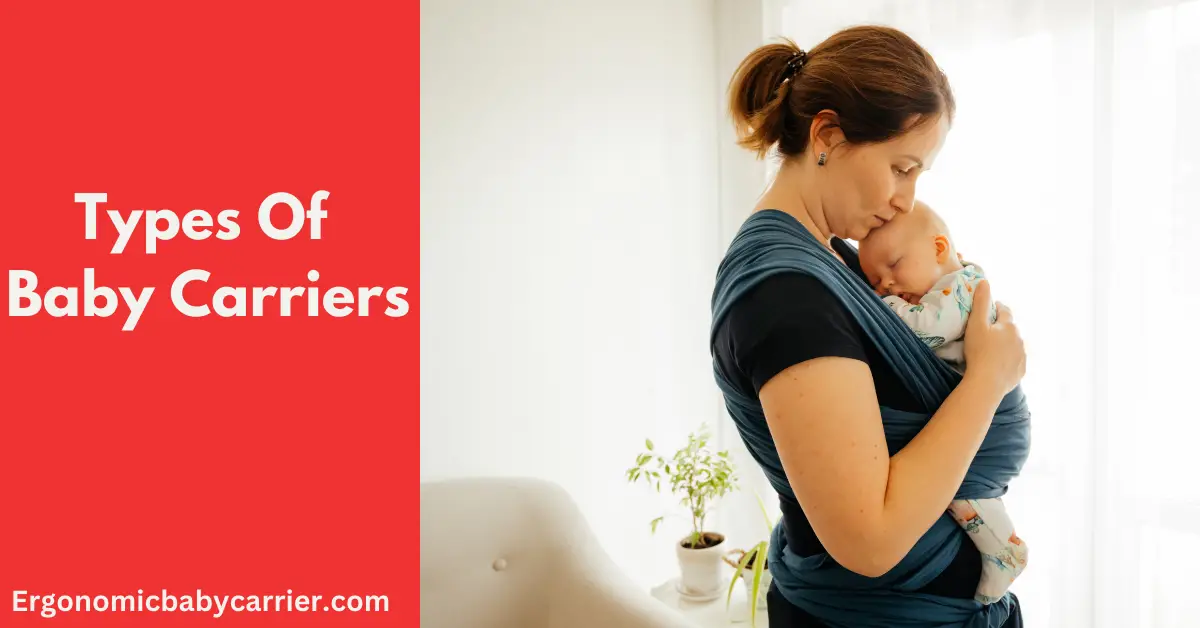Baby Carrier for Newborn,Baby Half Wrap Hip Carrier,One Shoulder Baby Holder Carrier for Toddler,Lightweight Breathable Mesh Natural Cotton Fabric,Suitable for Newborns Weighing 7-45 lbs
(as of April 29, 2024 07:42 GMT +00:00 - More infoProduct prices and availability are accurate as of the date/time indicated and are subject to change. Any price and availability information displayed on [relevant Amazon Site(s), as applicable] at the time of purchase will apply to the purchase of this product.)When it comes to carrying your precious little one, baby carriers offer a convenient and comfortable solution. With a wide range of options available, it can be overwhelming to choose the right one for you and your baby. In this article, we’ll explore the various types of baby carriers, their features, benefits, and considerations to help you make an informed decision
Introduction
Baby carriers have become an essential tool for parents, allowing them to keep their hands free while keeping their babies close. They promote bonding and offer a sense of security to both the baby and the caregiver. With different types of carriers available, it’s crucial to choose one that suits your lifestyle and meets your baby’s needs.
Benefits of Using Baby Carriers
Baby carriers offer a range of benefits. They facilitate skin-to-skin contact, which is vital for newborns’ development. Carried babies often cry less and have improved sleep patterns. Caregivers can also go about their daily activities while tending to their baby’s needs.
Types of Baby Carriers
Wrap Carriers
Wrap carriers consist of a long piece of fabric that’s tied around the wearer’s body. They offer a customizable fit and are suitable for newborns and infants. However, they require some practice to master the wrapping technique.
Sling Carriers
Sling carriers are worn over one shoulder and across the torso. They’re easy to use and provide a cozy environment for breastfeeding. However, they might strain one shoulder and may not distribute weight evenly.
Structured Carriers
Structured carriers have padded shoulder straps and waistbands, offering lumbar support. They are versatile and great for long periods of carrying. They come with adjustable settings to accommodate your growing baby.
Mei Tai Carriers
Mei Tai carriers blend features of wrap and structured carriers. They have a square body, four straps, and offer flexibility and support. They’re suitable for various carrying positions and provide comfort for both baby and wearer.
Ring Sling Carriers
Ring slings consist of a long piece of fabric threaded through two rings. They’re quick to put on and suitable for short trips. However, they might cause strain on one shoulder and aren’t ideal for extended use.
Factors to Consider When Choosing a Baby Carrier
Choosing the right baby carrier involves considering several factors:
Baby’s Age and Development
Newborns have different needs compared to older babies. Select a carrier that provides adequate head and neck support for your baby’s stage of development.
Comfort for the Wearer
A comfortable carrier is crucial for both you and your baby. Look for padded shoulder straps, lumbar support, and adjustable settings to distribute weight evenly.
Ease of Use
Consider how easy the carrier is to put on and take off, especially if you’ll be using it frequently.
Safety Features
Check for safety features like sturdy buckles, secure straps, and proper positioning to ensure your baby’s safety.
Support for Baby’s Hips
Opt for carriers that support the baby’s hips in a healthy position to prevent hip dysplasia.
How to Properly Use a Baby Carrier
Using a baby carrier correctly is essential for your baby’s safety and your comfort. Follow the manufacturer’s instructions and ensure proper positioning and secure fastening.
Comparing the Pros and Cons
Each type of baby carrier has its advantages and disadvantages. Consider your needs, lifestyle, and baby’s age to decide which one suits you best.
Top Brands in Baby Carrier Industry
Several reputable brands offer high-quality baby carriers, ensuring comfort, safety, and durability.
Tips for Using Baby Carriers Safely
- Always check for wear and tear before using the carrier.
- Keep your baby visible and kissable, ensuring a clear airway.
- Follow the TICKS rule for safe positioning: Tightly secure, In view at all times, Close enough to kiss, Keep the chin off the chest, Supported back.
Babywearing Trends and Communities
Joining babywearing communities can provide valuable insights, tips, and support from experienced caregivers.
Conclusion
Choosing the right baby carrier is a personal decision that depends on your lifestyle, preferences, and baby’s needs. With the diverse range of carriers available, you can find one that keeps both you and your baby comfortable and content.
FAQs
- Are baby carriers safe for newborns? Baby carriers are safe for newborns when used correctly and with carriers that provide proper head and neck support.
- Can I breastfeed while using a baby carrier? Yes, some carriers, like sling carriers, allow for discreet breastfeeding.
- Do baby carriers cause hip dysplasia? No, as long as you choose carriers that support the baby’s hips in the recommended M-shape position.







